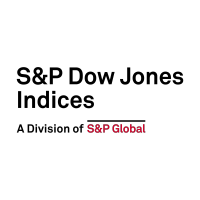Tag Archives: India
Building on Tradition: India’s Digital Reboot
India’s synonymous relationship with excellence in the field of technology is well known. This includes a notable roster of Indian-origin CEOs at the helm of global technology companies such as Adobe, Alphabet, IBM and Microsoft.1 This leadership is not only seen in companies abroad but also within India’s own borders, building on its reputation as…
- Other Tags
Surveying the Latest SPIVA India Scorecard Results
Were active and fixed income fund managers able to keep up with their benchmarks in the latest SPIVA India Scorecard? Dive into the latest results with S&P DJI’s Bhavna Sadarangani and Benedek Vörös.
- Categories Equities, Fixed Income
- Other Tags
- Categories
- Equities, Fixed Income
- Other Tags
Indexing’s Evolution in Indian Markets
Indexing, also known as index-based or passive investing, has been slowly but steadily growing and transforming asset management and financial markets in India. For more than a decade, there has been a strong preference for actively managed funds among Indian investors, and understandably so as historically these were the only financial products that dominated the…
Will Diwali Light Up Demand for Gold in the Fourth Quarter?
During the Diwali festival in India, retail gold demand tends to pick up, offering a floor to global gold prices or the potential impetus to push prices seasonally higher. Several years of lower-than-expected gold demand suggest that there is room for an uptick in demand in Q4 2022 for India’s second-largest import by value. India…
- Categories Commodities, India
- Other Tags
- Categories
- Commodities, India
- Other Tags
Results from the SPIVA India Year-End 2021 Scorecard
The S&P Indices Versus Active (SPIVA®) Scorecard,1 published semiannually, measures the performance of actively managed funds against their corresponding benchmarks. The latest SPIVA India report provides a number of interesting insights about the performance of active versus passive across active fund categories. 1. Long-Term Outperformance of Active Funds Was Difficult Indian bond funds had a…
- Categories India
- Other Tags
India’s ETF Market: Sustainability and Innovation
The pandemic, along with its disruption, also opened windows to many opportunities. Innovation and new ideas are the key words. Sustainability is not a new idea; however, its focus has accelerated with the pandemic and incidents triggered by climate change. Nations and organizations are adopting ESG measures and bringing its importance to the forefront. Its…
- Categories India, Multi-Asset, Sustainability
- Other Tags
- Categories
- India, Multi-Asset, Sustainability
- Other Tags
India’s ETF Market: Examining Passive Investing’s Continued Growth
Market Resilience The financial markets have been witness to numerous market cycles, trends, and crises, from the technology bubble in 2000 to the subprime housing crisis around 2007-08 and the collapse of Wall Street in 2009. 2020 brought the unexpected disruptor, coronavirus, and the ongoing pandemic changed the way markets and economies reacted. As with…
- Categories India
- Other Tags
- Categories
- India
- Other Tags
A Stellar 2021 for Indian Equities
Indian equities had a stellar 2021—the S&P BSE SENSEX rose over 23%, outpacing most major emerging markets, though slightly lagging the S&P 500®, which gained 29%. Information Technology and Financials were the top contributors, adding 9% and 6%, respectively, to the performance of the Indian bellwether. Smaller Indian companies did even better than blue chips;…
No Time to Thrive
S&P DJI has just released the final regional edition of our S&P Index Versus Active (SPIVA®) Mid-Year 2021 Scorecards. The semiannual reports cover the performance of actively managed funds in the U.S., Canada, Latin America, Europe, South Africa, India, Japan, Australia, and our newest regional addition, the Middle East and North Africa (MENA). SPIVA Scorecards…
- Categories Equities, Fixed Income
-
Other Tags
2021, Active, active management, Active vs. Passive, ASX, Australia, Brazil, BSE, canada, Canada FA, Chile, Europe, Index Investment Strategy, Japan, Latin America, Mexico, Passive, S&P 500, S&P Brazil BMI, S&P BSE 100, S&P Chile BMI, S&P Europe 350, S&P Pan Arab Composite, S&P TOPIX 150, S&P/ASX 200, S&P/BMV IRT, S&P/TSX Composite, Sherifa Issifu, South Africa, SPIVA, SPIVA Around the World, SPIVA Australia, SPIVA Canada, SPIVA Europe, spiva india, SPIVA Japan, SPIVA Latin America, SPIVA Mena, SPIVA South Africa, SPIVA U.S., TOPIX, TSX, US FA
- Categories
- Equities, Fixed Income
- Other Tags
- 2021, Active, active management, Active vs. Passive, ASX, Australia, Brazil, BSE, canada, Canada FA, Chile, Europe, Index Investment Strategy, Japan, Latin America, Mexico, Passive, S&P 500, S&P Brazil BMI, S&P BSE 100, S&P Chile BMI, S&P Europe 350, S&P Pan Arab Composite, S&P TOPIX 150, S&P/ASX 200, S&P/BMV IRT, S&P/TSX Composite, Sherifa Issifu, South Africa, SPIVA, SPIVA Around the World, SPIVA Australia, SPIVA Canada, SPIVA Europe, spiva india, SPIVA Japan, SPIVA Latin America, SPIVA Mena, SPIVA South Africa, SPIVA U.S., TOPIX, TSX, US FA
Gold Demand in India Bounced Back in 2021
In 2020, pandemic-driven lockdowns in India caused gold demand to drop. So far in 2021, Indian demand for gold is 500 tons greater, even with two months left in the calendar year. China has been the primary destination for gold over the past few years and that continued this year, but a strong pickup in…
- Categories Commodities
- Other Tags
- Categories
- Commodities
- Other Tags







